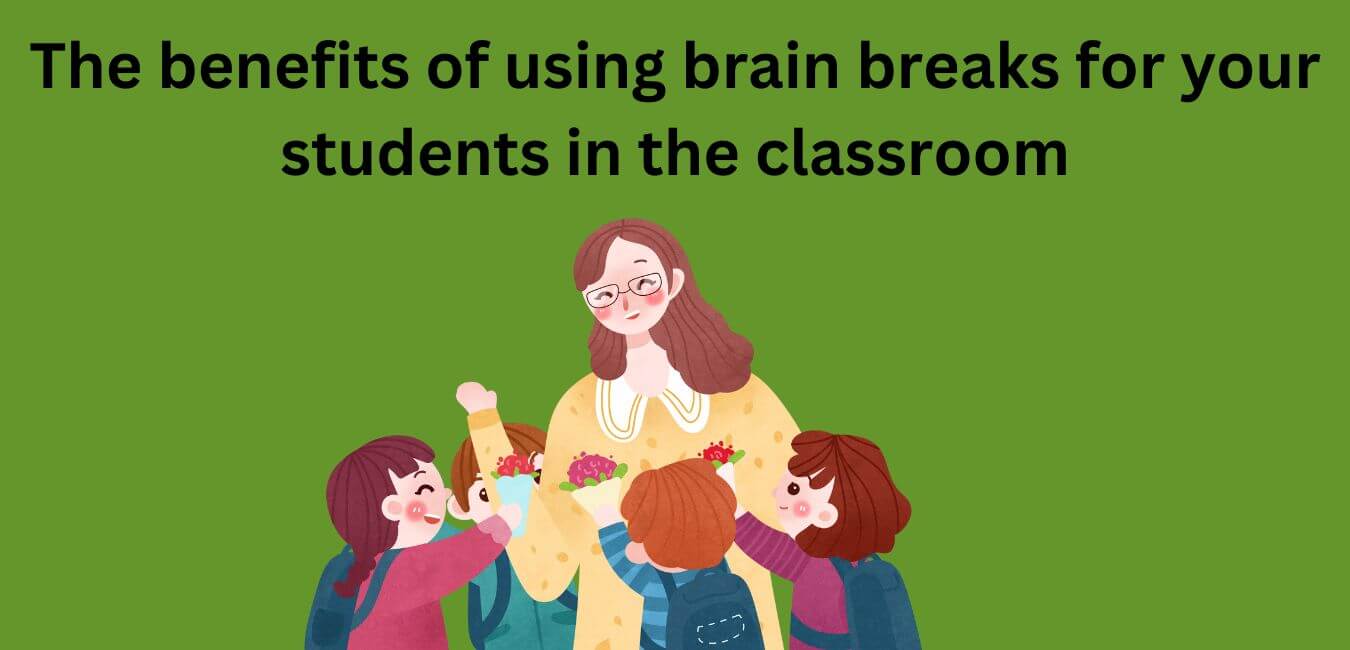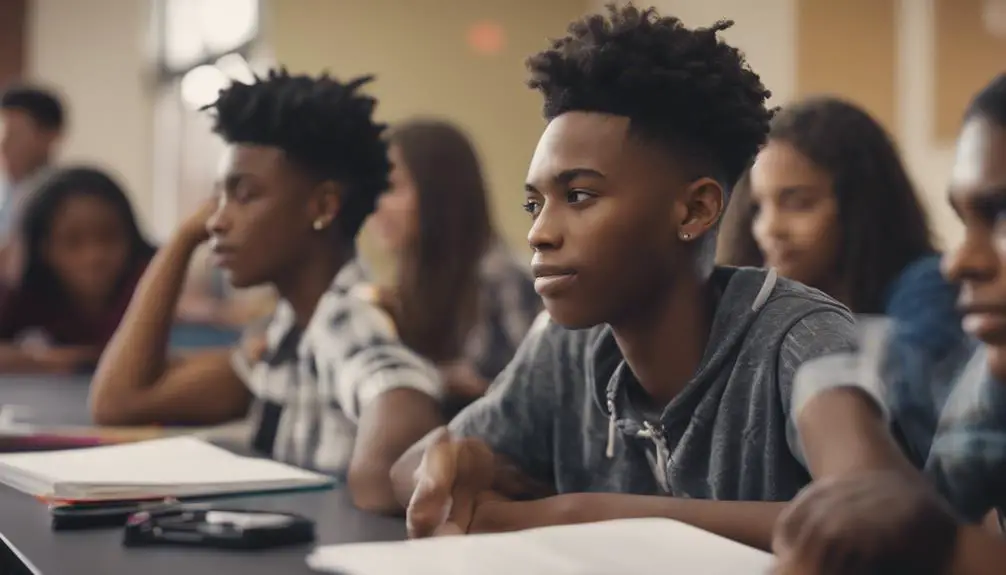The ability to work independently is a crucial skill that every student needs to possess in order to succeed in life. As educators, it’s our responsibility to instill this skill in our students from a young age. Not only does independent work promote self-confidence and creativity, but it also helps students develop critical thinking and problem-solving skills.
Teachers can make use of several strategies to encourage kids to work independently in the classroom. In this blog post, we’ll explore 15 such strategies that you can implement today to promote independent work among your students.
9 Reasons Why Promoting Independent Work is Important
Promoting independent work is becoming increasingly important in today’s economy. The rise of remote work, freelancing, and the gig economy means that more people are working independently than ever before. Here are nine reasons why promoting independent work is so valuable:
1. It allows for greater flexibility: Independent workers can set their own schedules and alter them as needed to fit their lives. This can be especially valuable for parents, caregivers, or anyone with outside responsibilities.
2. It encourages innovation: Independent workers are often able to try new things and take risks that might not be possible in a traditional employment setting. This can lead to more creativity and innovation in their work.
3. It promotes self-reliance: Independent workers must be self-motivated and disciplined. This can build a sense of self-reliance and autonomy that can carry over into other areas of their lives.
4. It fosters entrepreneurship: Many independent workers eventually start their own businesses or become entrepreneurs. Promoting independent work can help create a culture that values entrepreneurship and encourages its growth.
5. It supports economic growth: Independent workers can be an important driver of economic growth, especially in areas with high unemployment rates or declining industries.
6. It increases job satisfaction: Independent workers often report higher levels of job satisfaction than traditional employees. This can be due to the freedom and flexibility they enjoy, as well as the ability to choose their own projects and clients.
7. It provides opportunities for skill-building: Independent workers are often able to take on a variety of projects and learn new skills as they go. This can help them stay relevant and competitive in their industry.
8. It allows for diverse perspectives: Independent workers come from a variety of backgrounds and experiences. This diversity can be valuable in creating more innovative and inclusive work environments.
9. It can lead to better work-life balance: Independent workers have more control over their schedules and workloads, which can lead to better work-life balance and less burnout.
Overall, promoting independent work can have a range of benefits for workers, businesses, and the wider economy. As we continue to adapt to changing work trends and technological advancements, supporting independent work will become increasingly important for ensuring success and growth.
Techniques to Promote Independent Work in Your Classroom
Below are some of the tips that can help encourage your students to do independent work:
1. Take the Mystery Away: Help your students understand how attention works and identify what distracts them from their work.
Now that you’ve started delegating tasks to your students and employing effective classroom management techniques, it’s time to tackle attention and the myriad of distractions that can take your students’ focus off their work. Taking the mystery away from attention can go a long way towards making your classroom a more productive environment. Educate your students on how attention works and what can trigger distractions, and help them identify their own unique distractions.
By doing this, you can work with your students to create individualized solutions that will help them stay focused and engaged in their work. Remember, everyone’s attention span is different, so it’s important to work with your students to develop strategies that work best for them.
2. Delegation: Empower your students by letting them take over tasks like taking attendance or passing out materials.
Now that you’ve taken steps to create a positive and engaged learning environment, it’s time to consider delegation. As a teacher, it’s easy to get bogged down by administrative tasks like taking attendance or passing out materials.
Instead, empower your students by letting them take on these responsibilities. Not only does this free up time for you to focus on instruction, but it also builds a sense of responsibility and ownership for the classroom as a whole.
Encourage your students to take on different roles and rotate them throughout the year. By doing so, they’ll develop valuable skills like time management, organization, and leadership.
Remember, delegation is just one strategy for promoting independent work among your students. Experiment with different methods to find what works best for you and your classroom.
Keep up the enthusiasm and engagement, and your students will thrive!
3. Try Effective Classroom Management Strategies: Experiment with different methods to find what works best for you and your students.
Now that you have taken steps to understand your students’ attention and behavior in the classroom, it’s time to experiment with various classroom management strategies. Different methods may work for different students, so don’t be afraid to try out a few and see what works best for you and your class.
Some effective classroom management strategies include positive reinforcement, clear expectations, consistent consequences, and modeling appropriate behavior. By experimenting with different strategies, you will be able to create a positive and productive learning environment that benefits both you and your students.
Remember, finding the right balance is key – a healthy mix of structure, flexibility, and positive relationships will help your students develop independence and thrive in the classroom. Keep up the great work.
4. One-On-One Interaction: Develop a stronger relationship with each student by sitting down with them one-on-one to discuss their progress.
Now that you’ve implemented a few strategies to promote independent work in your classroom, let’s talk about one that can really make a difference: one-on-one interaction with your students. Sitting down with each student to discuss their progress is a great way to develop a stronger relationship with them. Not only will this help you understand each student’s strengths and weaknesses, but it also shows them that you care about their success.
By taking the time to have a personal conversation with them, you’ll be able to offer feedback and support that can help them succeed both academically and socially. This strategy, combined with the others we’ve discussed, can contribute to creating a classroom environment that supports independent work and fosters a deep sense of learning.
5. Focus on Behavioral Issues: If a behavior is a concern, make sure you address it appropriately.
Now, let’s focus on how to address behavioral issues in your classroom.
When a student’s behavior becomes a concern, it’s important to address it appropriately to avoid disrupting the learning process.
First, identify the root cause of the behavior and address it with the student in a calm and respectful manner. Provide clear expectations and consequences for misbehavior, while also praising positive behavior.
It’s also important to be consistent with your approach and follow through with consequences when necessary. Remember, positive reinforcement is key and helps create a positive learning environment.
By addressing behavioral issues appropriately, you can help your students stay on track and reach their full potential. Keep up the great work.
6. Appropriate Curriculum: Choose lessons that are engaging for your students to reduce the social cost of being thrown out due to misbehavior.
Now that we’ve covered a variety of strategies for promoting independent work in your classroom, let’s focus on the importance of choosing an appropriate curriculum for your students. It’s essential that you select lessons and activities that are engaging and relevant to their interests and abilities. Doing so can help reduce the social cost of being thrown out due to misbehavior.
When students are bored or disinterested, it’s easier for them to become distracted, disrupt class, or disengage altogether. But when they’re actively engaged in challenging and exciting tasks, they’re more likely to stay focused and on-task.
So take the time to find out what your students like, what they’re good at, and what they want to learn. Create a curriculum that caters to their needs, and you’ll see a positive change in their behavior and performance.
7. Foster a Respectful Atmosphere: Use behavior management strategies to create a positive learning environment.
When it comes to promoting independent work among your students, one key strategy is to foster a respectful atmosphere in your classroom. Using behavior management strategies can help create a positive learning environment where students feel respected and supported.
Some effective techniques include using visual supports, assigning classroom jobs, and using incentives to reward good behavior.
Additionally, partnering students up for collaborative work can help keep them motivated and on track. Remember to move around the classroom and provide support where needed, and always stay flexible and adaptable with your behavior management plan. By taking these steps, you can create a comfortable learning environment that encourages independent work and academic success.
8. Visual Supports: Use posters, charts, and other visual aids to remind students about classroom routines and activities.
Another great strategy to promote independent work among your students is to use visual supports. Posters, charts, and other visual aids can be a great way to remind students about classroom routines and activities.
These visual aids help students stay on track and keep them focused on the task at hand. By providing clear and concise information, you can reduce the chances of students getting distracted or off task.
Visual supports can also be used to promote independence by providing students with the tools they need to complete tasks on their own. By including important information and step-by-step instructions on posters and charts, you can help students become more confident and independent in their work.
Remember to experiment with different visual supports to see what works best for you and your students.
9. Assign Classroom Jobs: Give students assigned roles within the classroom to help them feel more responsible and engaged.
Now let’s talk about assigning classroom jobs to your students. Giving your students assigned roles within the classroom can help them feel more responsible and engaged in the classroom.
When students take on responsibilities such as being a class greeter, classroom librarian, or tech helper, it helps them feel like an important part of the class community. By assigning these jobs, you are also providing opportunities for students to develop leadership skills and take ownership of their learning. Not only does this foster a sense of accountability, but it can also help build positive relationships between classmates as they work together on their assigned tasks.
So, give it a try and see how it can benefit your classroom community.
10. Use Timers: Teach students to use a timer to track how much time they have left to complete a task.
One of the best ways to keep students on task and focused during independent work time is to use timers. By teaching students to use a timer, they will be able to track how much time they have left to complete a task and manage their time effectively. A visual timer can be particularly useful for younger students who may not fully grasp the concept of time yet.
Seeing the time ticking down on a timer can help them stay on task and work more efficiently. Not only does using timers help with time management, but it also helps students feel more in control of their work which can lead to increased productivity.
So next time you assign an independent task, make sure to provide timers for your students and watch as they become more focused and productive in their work.
11. Chunk Assignments: Break larger assignments into smaller parts to make them more manageable for students.
Now that you’ve tried several strategies to promote independent work among your students, it’s time to focus on making their assignments easier to manage. That’s where chunking comes in. Breaking down a large task into smaller ones makes it less overwhelming for your students.
It gives them a sense of accomplishment as they complete each chunk, and makes it easier for them to stay on task without feeling discouraged or distracted. And as a bonus, it also helps you track their progress more effectively.
So, as you assign work to your students, think about how you can chunk it into smaller, manageable parts. You can even have them break it down themselves, and give them due dates for each chunk. This will help them stay organized and motivated to finish the task at hand.
12. Set Goals: Encourage students to set their own goals for completing their work and provide support as needed.
Now let’s talk about setting goals. Encouraging your students to set their own goals is a great way to promote independent work in the classroom.
By giving them ownership of their own progress, you can help them develop a sense of responsibility and pride in their achievements. Be sure to provide support and guidance as needed, especially for younger students who may need help breaking down larger tasks into manageable parts.
Remember, goal-setting is not a one-size-fits-all approach; work with each student to identify their individual goals and provide feedback along the way. By focusing on individual progress, you can help each of your students reach their full potential.
Keep up the great work!
13. Use Incentives: Reward students who finish their work on time or exhibit good behavior during independent work time.
Now that you’ve tried out different strategies to promote independent work in the classroom, it’s time to talk about rewarding your students. As you know, independent work can be challenging, and it takes a lot of effort and concentration to complete tasks on time.
So, it’s essential to acknowledge and celebrate these achievements with your students. Incentives can be a great way to motivate students and help them stay on track during independent work time. Consider offering rewards to students who finish their work on time or exhibit good behavior while working independently.
Rewards can range from extra free time, stickers, or other small tokens of appreciation. Remember, the objective is to encourage your students to keep up the good work and continue to develop their independent work skills.
So, let’s keep up the good work together, and don’t forget to keep trying out different strategies until we find what works best for you and your students.
14. Partner Work: Have students work in pairs to keep each other on track and motivated.
Now, let’s talk about partner work.
Sometimes, working independently can be isolating and unmotivating. That’s where having a partner can make all the difference.
When students work in pairs, they can keep each other accountable and motivated. This strategy also helps students develop their communication and collaboration skills. Encourage your students to find a partner they work well with or assign partners yourself.
Make sure to establish clear expectations for how partners should work together, such as taking turns, listening actively, and giving constructive feedback. With partner work, your students will stay on track and be inspired to do their best.
15. Move Around the Classroom: Avoid staying in one spot for too long. Circulate the classroom to monitor progress and provide support where needed.
As a teacher, you know how important it is to monitor your students’ progress and provide support when needed. One way to do this is by moving around the classroom during independent work time.
By avoiding staying in one spot for too long, you can keep an eye on all of your students and ensure they are staying on-task. Plus, circulating the classroom can make your presence felt, which can help deter misbehavior.
Don’t be afraid to interact with your students as you walk around – giving a quick nod of encouragement or asking a question can make all the difference. By being present and engaged during independent work time, you can help your students feel supported and confident in their ability to work independently.
Conclusion
Promoting independent work in the classroom is a great way to help students develop important skills such as self-motivation, problem-solving, and collaboration. By trying out different strategies such as goal-setting, incentives, partner-work, and moving around the classroom, you can help your students stay on-task and engaged during independent work time. Remember, every student is different, so it’s important to tailor your approach to their individual needs and goals. With your support and guidance, your students will be well-prepared to take on new challenges and reach their full potential.

















